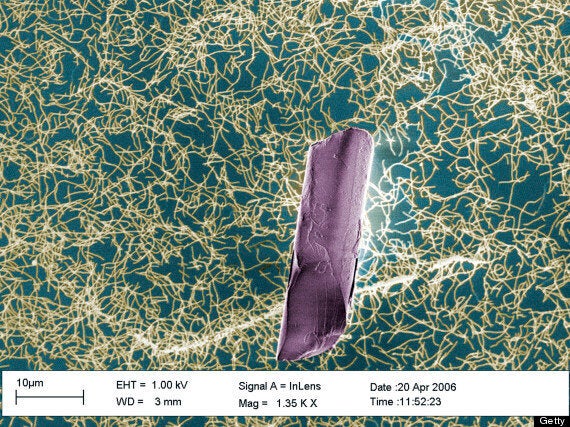The first computer built with carbon nanotubes instead of silicon has been unveiled in California.
Researchers at Stanford University said that the prototype device could mark the start of a second computing revolution.
The device is able to perform at faster speeds, for less power and in smaller form factors than traditional silicon computers.
The team reported in the journal Nature that the computer, named 'Cedric', is the most complex carbon-based electronic system in the world.

Above: Carbon nanotubes compared to a human hair
Unfortunately, that's not currently saying much. The machine is only able to process one bit of information, at the minuscule speed of 1Khz.
But the concept it proves could be ground-breaking:
"People have been talking about a new era of carbon nanotube electronics moving beyond silicon," said Professor Subhasish Mitra, an electrical engineer and computer scientist, in a statement.
"But there have been few demonstrations of complete digital systems using this exciting technology. Here is the proof."
Carbon nanotubes are a remarkably small, conductive cylinders made with sheets of carbon atoms. They were first used to build transistors more than 15 years ago, but turning them into a complete computer has proven difficult because of imperfections that blight large-scale production of the material.
The Stanford's team's innovation was to find a way to build circuits of CNTs with few enough imperfections to be practical, and to build a working circuit using that process.
The technology is young, but is already a prime candidate to replace silicon in the decades to come. While scientists have been able to double the number of transistors on the same size chip roughly every two years since the 1960s - a rate of progress known as 'Moore's Law' - silicon has in-built physical limits which mean that progress will one day stall.
For more details about the Stanford breakthrough, read this full report at the Stanford News or head over to Nature to take a look at the complete report.